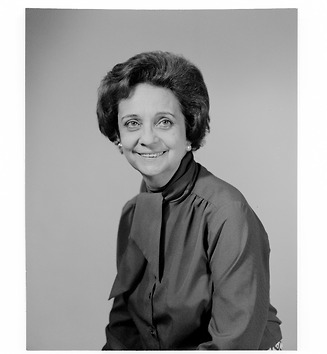Dr. Isabel C. Pérez Farfante was a Cuban zoologist who specialized in the systematics of penaeoid shrimp. She joined the National Marine Fisheries Service as a systematic zoologist at its laboratory in the Smithsonian’s National Museum of Natural History in 1966. She was appointed carcinologist emeritus with the Service in 1986, and, one year later, she earned a role as a research associate in the Museum’s division of crustacea, where she remained until her retirement in 1997.
Farfante’s journey to the Smithsonian was far from typical. After she had completed her doctorate 1948 in the United States and was working as a professor and biologist in Cuba, Farfante and her husband, geographer and economist Gerardo Canet, learned they had been blacklisted by the government after Canet declined to accompany Che Guevara on a trip abroad. Fearing for their safety, the family fled their home and moved to the United States, where Farfante had already established ties at the Harvard Museum of Comparative Zoology.
A series of awards in the United States and research opportunities first led Farfante to Harvard. In 1942, she earned a Guggenheim Fellowship in organismic biology and ecology. She was also awarded a fellowship with the Woods Hole Oceanographic Institution and the Alexander Agassiz Fellowship in Oceanography and Zoology. With these experiences, Farfante arrived at Harvard with an impressive resume. She obtained her master’s degree in 1944 and doctorate in 1948 from Radcliffe College at Harvard University. She became the first Cuban woman to earn a doctoral degree from an Ivy League school.

Further Reading
- Bauer, Raymond T. “Isabel C. Pérez Farfante de Canet.” Journal of Crustacean Biology 30, no. 2 (2010): 345–9.
- “Hispanic Heritage Month: Isabel Pérez Farfante” by Maria Robles Gonzalez and Liz Boatman, No Bones, Smithsonian’s National Museum of Natural History
- Isabel Pérez Farfante, Wikipedia
Produced by the Smithsonian Institution Archives. For copyright questions, please see the Terms of Use.

Leave a Comment